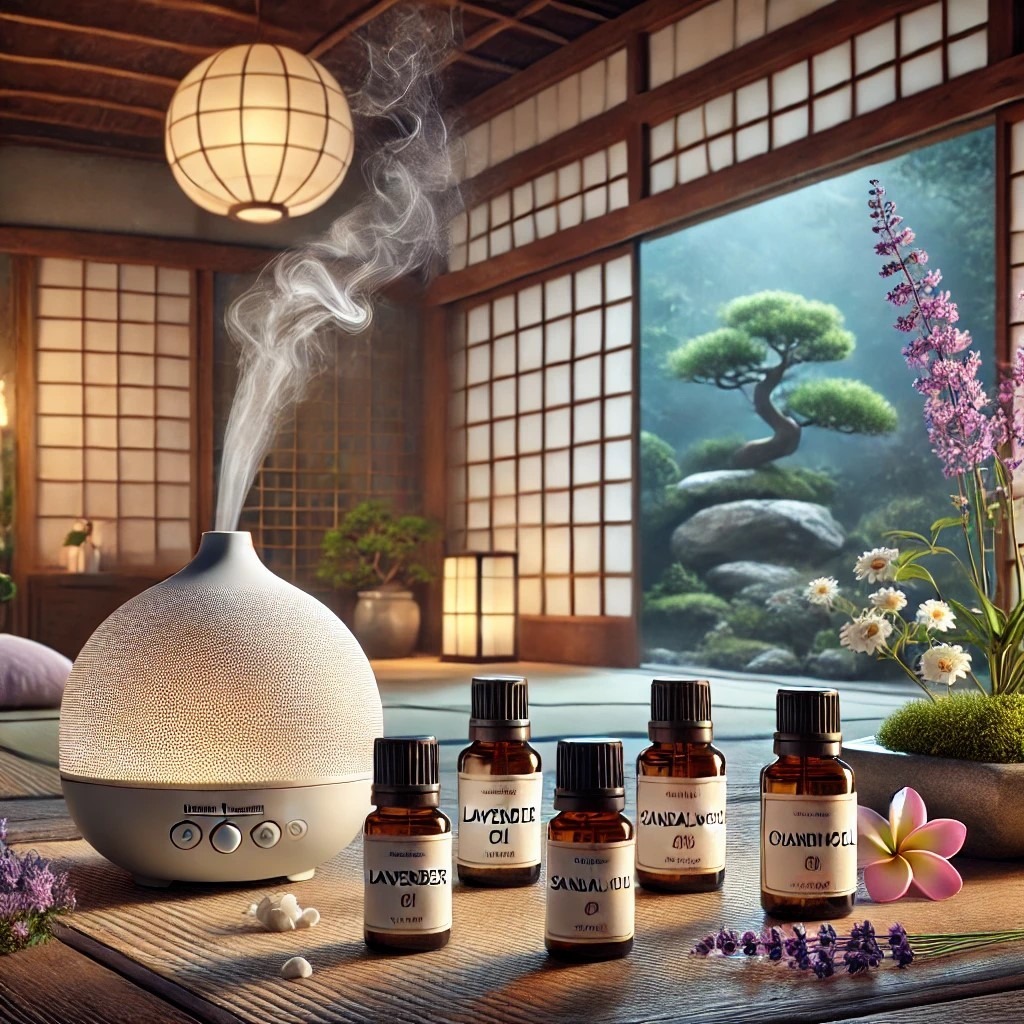Best Essential Oils for Meditation and Relaxation
The Benefits of Using Essential Oils in Meditation
Hey there, fellow peace-seekers! 🌿 Are you ready to take your meditation practice to the next level? If you’re anything like me, finding that sweet spot of relaxation can sometimes feel like chasing a unicorn. But guess what? Essential oils might just be the magical elixir we’ve been searching for. Did you know that a study by the National Center for Biotechnology Information found that aromatherapy can significantly enhance relaxation and improve mood? Let’s dive into the world of essential oils and discover how these potent plant extracts can transform your meditation experience.
Why Use Essential Oils in Meditation?
So, why should we consider using essential oils during meditation? Well, these little bottles of wonder have been used for centuries to enhance mental, emotional, and physical well-being. Here are some key benefits:
- Enhanced Relaxation: Essential oils can help calm the mind and body, making it easier to slip into a meditative state.
- Improved Focus: Certain oils can sharpen your mental clarity, helping you stay present during your practice.
- Emotional Balance: Aromatherapy can support emotional healing and balance, promoting a sense of peace and well-being.
- Physical Benefits: Some essential oils have properties that can reduce tension and stress in the body.
The Science Behind Essential Oils
The science behind essential oils is fascinating. When we inhale these aromatic compounds, they stimulate the olfactory system, which is directly connected to the brain’s limbic system. This part of the brain is responsible for emotions, memories, and even some autonomic functions. In other words, the scents of essential oils can trigger powerful emotional and physiological responses.
Top Essential Oils for Meditation
Now, let’s get specific. Here are some of the best essential oils to incorporate into your meditation practice:
Lavender
Lavender is the superstar of relaxation. Its soothing aroma can help you unwind and let go of the day’s stresses. Dr. David Crow, an expert in botanical medicine, says, “Lavender oil is a natural relaxant that can help calm the nervous system.”
Frankincense
Frankincense has been used in spiritual practices for thousands of years. It’s known for its grounding and centering properties. According to Dr. Axe, a certified doctor of natural medicine, “Frankincense oil can deepen your meditation practice and help you feel more connected to your spiritual side.”
Sandalwood
Sandalwood is another ancient oil that’s perfect for meditation. Its warm, woody scent is deeply calming and can help quiet the mind. It’s often used in religious ceremonies for its grounding effects.
Chamomile
Chamomile isn’t just for tea! This gentle oil is fantastic for reducing anxiety and promoting relaxation. It’s like a cozy blanket for your mind.
Vetiver
Vetiver is known as the “oil of tranquility.” Its earthy scent is incredibly grounding, making it an excellent choice for meditation. It’s also great for improving focus and mental clarity.
How to Use Essential Oils in Meditation
Now that we’ve covered the best oils, let’s talk about how to use them. Here are a few methods to get you started:
Diffusion
Using an essential oil diffuser is one of the easiest ways to enjoy the benefits of aromatherapy. Simply add a few drops of your chosen oil to the diffuser, and let the calming scent fill the room.
Topical Application
You can also apply essential oils directly to your skin, but be sure to dilute them with a carrier oil (like coconut or jojoba oil) to avoid irritation. Common application points include the wrists, temples, and the back of the neck.
Inhalation
For a quick burst of aroma, place a drop or two of essential oil on your palms, rub them together, and take a deep breath. This method is especially useful if you need to center yourself quickly.
Expert Tips and Tricks
- Create a Routine: Consistency is key. Try to use your chosen essential oils at the same time and place each day to create a strong association with your meditation practice.
- Experiment: Don’t be afraid to try different oils and blends to see what works best for you. Everyone’s response to scents can be different.
- Use Quality Oils: Invest in high-quality, pure essential oils. Avoid synthetic fragrances, as they don’t offer the same benefits and can even be harmful.
A Little Humor Goes a Long Way
And hey, let’s not forget to keep things light. Imagine explaining to your friends that your secret to zen is “sniffing plants.” They’ll probably look at you like you’ve grown a third eye – which, if you’re deep into meditation, maybe you have! 😉
How to Use Essential Oils for Relaxation
Hey there, fellow relaxation enthusiasts! 🌸 Ever feel like you need a little extra help to unwind after a long day? Well, you’re in luck because essential oils might just be your new best friend. Did you know that the Global Wellness Institute found that aromatherapy is a $3.6 billion market worldwide? People everywhere are turning to these potent plant extracts to find a sense of calm and peace. So, let’s dive into the wonderful world of essential oils and learn how to use them effectively for relaxation.
Different Methods of Application
There are several ways to use essential oils, and each method offers unique benefits. Here’s a quick rundown:
Diffusion
Diffusion is one of the most popular methods of using essential oils. It’s as easy as pie! Simply add a few drops of your favorite essential oil to a diffuser, and let the calming scent fill your space.
- Benefits:
- Disperses the oil throughout the room evenly.
- Creates a pleasant and therapeutic atmosphere.
- Can purify the air.
- Expert Tip: Dr. Josh Axe, a well-known natural health expert, recommends lavender or chamomile for relaxation, saying, “These oils have been shown to reduce stress and promote calm.”
Topical Application
Applying essential oils directly to the skin is another effective method. However, it’s crucial to dilute the essential oil with a carrier oil (like coconut or jojoba oil) to prevent irritation.
- Benefits:
- Direct absorption into the bloodstream.
- Targeted relief for specific areas of tension or pain.
- Nourishing for the skin.
- How to Apply:
- Pulse Points: Apply to wrists, temples, and behind the ears.
- Massage: Incorporate into a relaxing massage for added benefits.
- Bath: Add a few drops to your bath for a spa-like experience.
- Expert Tip: Dr. David Crow, a botanical medicine expert, suggests, “Always perform a patch test first to ensure you don’t have an allergic reaction.”
Inhalation
Inhalation is a quick and effective way to enjoy the benefits of essential oils. This method involves simply breathing in the aroma of the oil.
- Benefits:
- Immediate impact on the limbic system.
- Convenient and easy to do anywhere.
- Can provide instant relief from stress.
- How to Inhale:
- Directly from Bottle: Open the bottle and take a deep breath.
- Steam Inhalation: Add a few drops to hot water, cover your head with a towel, and inhale the steam.
- On-the-Go: Place a drop or two on a cotton ball or handkerchief and inhale as needed.
- Expert Tip: Dr. Eric Zielinski, an essential oils researcher, advises, “Inhaling essential oils like eucalyptus or peppermint can also help clear nasal passages and improve respiratory health.”
Safety Tips and Precautions
While essential oils are generally safe, it’s important to use them correctly to avoid any adverse effects. Here are some key safety tips:
- Dilution: Always dilute essential oils with a carrier oil before applying them to the skin. A good rule of thumb is 1-2% dilution (1-2 drops of essential oil per teaspoon of carrier oil).
- Patch Test: Before using a new essential oil, perform a patch test on a small area of skin to check for any reactions.
- Avoid Sensitive Areas: Do not apply essential oils to sensitive areas like the eyes, ears, and mucous membranes.
- Consult with a Professional: If you’re pregnant, nursing, or have a medical condition, consult with a healthcare professional before using essential oils.
- Quality Matters: Use high-quality, pure essential oils to ensure safety and effectiveness. Avoid synthetic fragrances.
Best Practices for Beginners
If you’re new to the world of essential oils, don’t worry! Here are some best practices to help you get started:
- Start Small: Begin with a few well-known relaxing oils like lavender, chamomile, and ylang-ylang.
- Educate Yourself: Read up on the properties and uses of different essential oils. Books, reputable websites, and expert blogs are great resources.
- Create a Routine: Incorporate essential oils into your daily routine to maximize their benefits. For example, diffuse lavender in the evening to help unwind before bed.
- Experiment: Don’t be afraid to try different oils and blends to see what works best for you. Everyone’s preferences and responses can vary.
- Keep a Journal: Track your experiences with different oils. Note how each one makes you feel and any specific benefits you notice.







